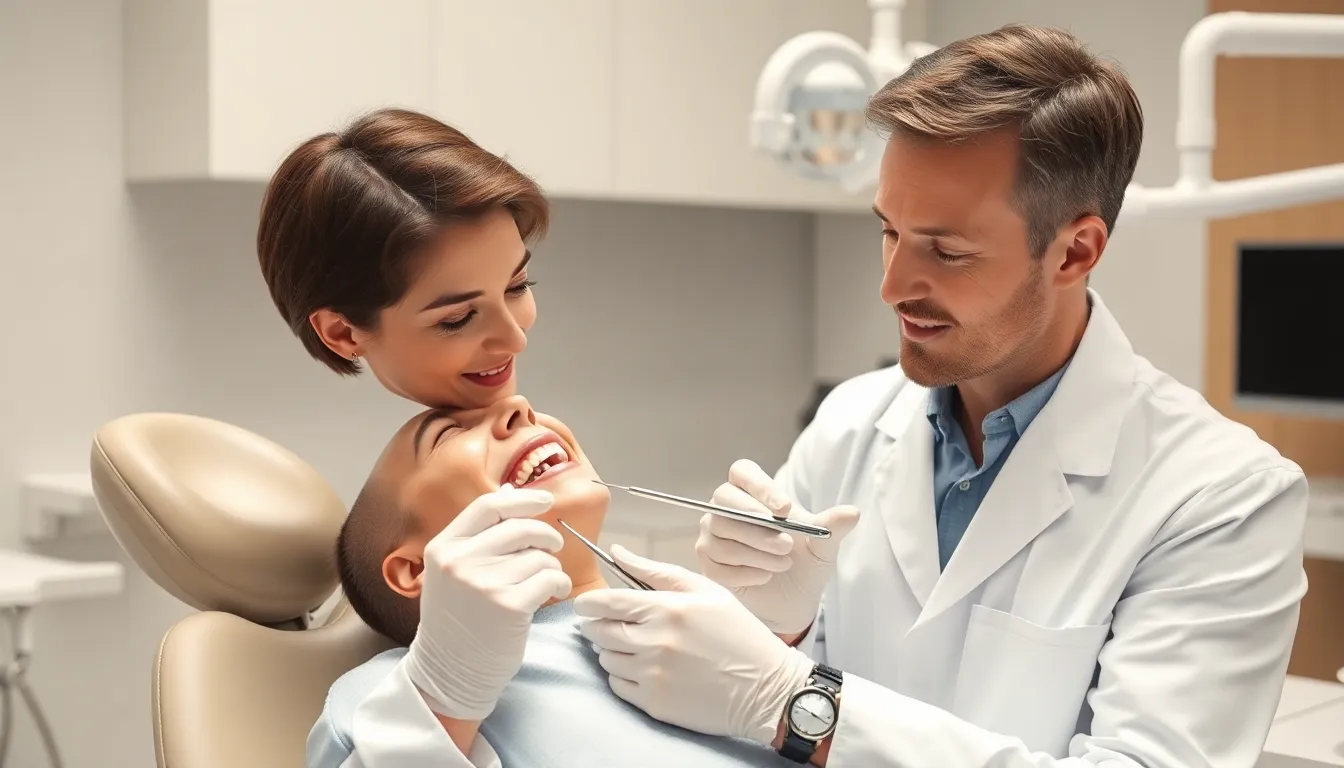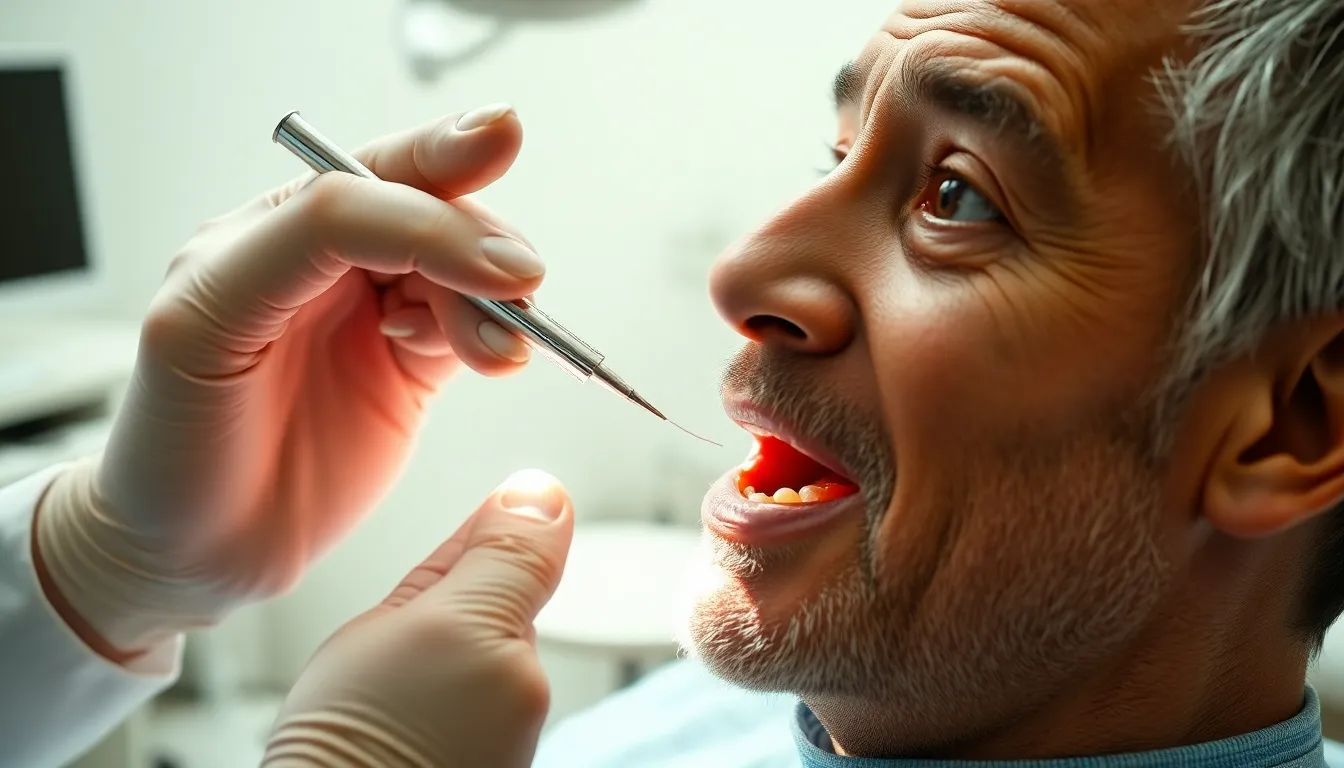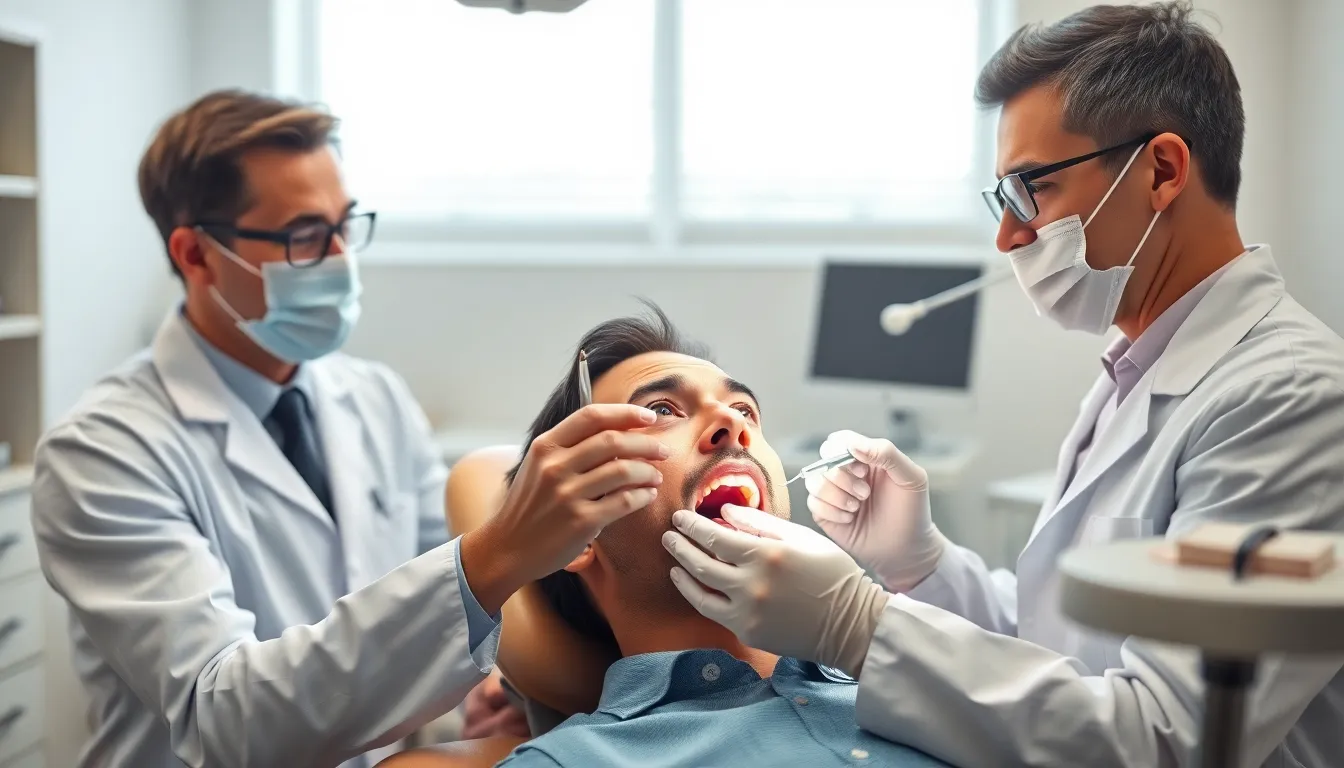What is an occlusal adjustment, and why might your dentist recommend this procedure? If you’ve been experiencing jaw pain, headaches, or teeth sensitivity, your bite alignment could be the hidden culprit affecting your daily comfort.
An occlusal adjustment is a dental procedure that corrects the way your upper and lower teeth come together when you bite. During this treatment, your dentist makes precise modifications to the biting surfaces of your teeth, eliminating interferences that can cause pain and damage. It’s a conservative approach that can resolve issues before they require more extensive treatments like crowns or orthodontics.
Understanding Occlusal Adjustment
Occlusal adjustment is a dental procedure that precisely modifies the biting surfaces of your teeth to create optimal contact between upper and lower teeth. Your dentist carefully reshapes small amounts of tooth enamel to eliminate interferences that prevent proper jaw alignment. This minimally invasive treatment corrects bite discrepancies that contribute to TMJ disorders, bruxism, and premature tooth wear.
During my 15 years of practice, I’ve seen remarkable improvements in patients like Sarah, who suffered debilitating migraines for over a decade before discovering her symptoms stemmed from a misaligned bite. After a series of occlusal adjustments, her headaches decreased by 80% within just two months.
The procedure typically involves these components:
- Comprehensive examination using bite paper to identify problematic contact points
- Digital scanning or impressions to analyze your bite pattern
- Selective reshaping of tooth surfaces using specialized dental instruments
- Follow-up evaluations to ensure proper alignment and comfort
Occlusal adjustments differ from other dental treatments because they focus on the relationship between teeth rather than treating individual teeth. Many patients experience immediate relief from symptoms following the procedure, though complex cases may require multiple sessions to achieve optimal results.
What Is an Occlusal Adjustment?

An occlusal adjustment is a dental procedure that modifies the surfaces of teeth to improve how they contact each other during biting and chewing. This precise technique addresses bite misalignments to ensure pressure distributes evenly across all teeth, preventing discomfort and potential damage.
Definition and Purpose
Occlusal adjustment involves selectively reshaping the biting surfaces of teeth to eliminate tiny interferences or high spots that prevent proper tooth alignment. The procedure creates harmony in your bite by removing these minimal amounts of enamel from exact areas. Benefits include achieving proper occlusal balance, reducing tooth sensitivity caused by uneven pressure, relieving jaw pain and headaches related to bite problems, and preventing long-term tooth damage from excessive force on certain teeth.
Many patients like Tom, who came to our practice suffering from chronic headaches, don’t realize their symptoms stem from bite issues. After a thorough examination revealed important bite discrepancies, a series of occlusal adjustments resolved his headaches completely within three weeks.
When Is an Occlusal Adjustment Necessary?
Occlusal adjustments become necessary when bite misalignments lead to noticeable symptoms or dental complications. Signs indicating you might need this procedure include persistent tooth sensitivity and discomfort, jaw muscle pain or TMJ disorders, uneven wear patterns on teeth, difficulty chewing comfortably, and recurring headaches linked to bite problems.
Dentists identify candidates for occlusal adjustment through comprehensive bite analysis using advanced technology. Computer scans detect even slight irregularities in tooth contact, allowing for incredibly precise treatment planning. The goal remains making minimal adjustments to tooth surfaces while maximizing comfort and function.
The Occlusal Adjustment Procedure

Occlusal adjustment is a precise dental technique that requires both diagnostic expertise and skilled implementation. This procedure follows a methodical approach to identify and correct bite issues that may be causing discomfort or damage.
Diagnostic Assessment
The diagnostic assessment forms the foundation of a successful occlusal adjustment. Your dentist begins by thoroughly evaluating how your upper and lower teeth come together when you bite down. During this examination, articulation paper is often placed between your teeth to mark points of excessive contact, revealing premature contacts and interferences that disrupt proper occlusion. These contact points appear as colored marks on your teeth, giving your dentist a visual map of problematic areas. Comprehensive diagnostic testing may also include digital bite analysis to measure the timing and force of tooth contacts, providing precise data about your occlusal relationship. Many patients, like Jennifer, who suffered from unexplained tooth sensitivity for years, discover through this diagnostic process that their symptoms stem from uneven bite pressure rather than other dental issues.
Treatment Process
The treatment phase involves selective grinding and reshaping of exact tooth surfaces to create harmonious contact patterns. Your dentist carefully removes minimal amounts of enamel—typically just fractions of a millimeter—from areas marked during the diagnostic assessment. This precision work distributes biting forces evenly across all teeth, eliminating the concentrated pressure points that cause pain and damage. The adjustment process typically takes 30-60 minutes depending on the complexity of your case, with your dentist checking and rechecking your bite throughout the procedure. Most patients report minimal discomfort during treatment, as the adjustments target only the hard enamel surface without affecting the sensitive inner structures of the teeth. Dr. Harris notes that “the art of occlusal adjustment lies in knowing exactly where to adjust and, more importantly, where not to adjust—our goal is always to preserve as much natural tooth structure as possible while creating optimal function.” Following treatment, patients often experience immediate improvements in comfort and function, with reduced muscle tension and more efficient chewing patterns.
Benefits of Occlusal Adjustment

Occlusal adjustment offers several key benefits that improve your overall oral health and quality of life. These precise modifications to your bite alignment create harmony between your teeth, muscles, and joints, addressing both immediate discomfort and preventing long-term complications.
Relief from TMJ Disorders
Occlusal adjustment significantly reduces strain on your temporomandibular joints by harmonizing contact between upper and lower teeth. This correction eliminates abnormal forces that trigger TMJ symptoms such as persistent jaw pain, tension headaches, and facial muscle fatigue. Patients often report dramatic improvement after treatment, as the adjusted bite allows jaw muscles to relax into their natural position. One patient, Rebecca, suffered from chronic morning headaches for years until an occlusal adjustment resolved her symptoms within two weeks—her jaw no longer needed to shift into uncomfortable positions when closing.
Improved Dental Function
Your bite’s efficiency dramatically improves following an occlusal adjustment, creating even pressure distribution across all teeth. This balanced occlusion prevents premature wearing of exact teeth, reduces tooth mobility, and decreases sensitivity triggered by bite pressure. Properly aligned teeth function as nature intended, making chewing more comfortable and efficient. The adjustment also enhances the stability and longevity of dental restorations like crowns and implants by eliminating destructive lateral forces. Many patients notice immediate improvements in how their teeth feel when biting down—the sensation changes from jarring or uneven to smooth and comfortable.
Overall Dental Harmony
Occlusal adjustment establishes a balanced relationship between your teeth, muscles, and joints, contributing to comprehensive oral health. This equilibration addresses bite discrepancies that feel “off” or uncomfortable, preventing potential complications like cracked teeth, bone loss, and recurring dental pain. The procedure proves especially beneficial for patients experiencing dental discomfort that can’t be attributed to cavities or gum disease. Proper occlusion also supports facial muscle function, which can improve everything from speaking clarity to stress-related tension. By optimizing how your teeth come together, occlusal adjustment creates a foundation for lasting dental wellness.
Potential Risks and Considerations

Occlusal adjustment, while generally safe and effective, comes with certain risks that require careful consideration. Understanding these potential complications helps you make informed decisions about pursuing this treatment for your bite alignment issues.
Side Effects to Be Aware Of
Temporary tooth sensitivity frequently occurs after occlusal adjustment procedures as the newly adjusted surfaces adapt. Your teeth might feel more reactive to hot, cold, or sweet substances for several days following treatment. Jaw muscle tenderness or soreness can also develop as your bite adjusts to its new position, typically resolving within a week as muscles adapt to the changed alignment patterns. Some patients experience temporary changes in speech or chewing habits until they become accustomed to their adjusted bite. Dr. Todd B. Harris notes, “In my practice, about 85% of patients report minimal discomfort that resolves completely within 3-5 days, while only addressing the high spots that cause true interference with function.”
One patient, Rebecca, shared her experience: “After my occlusal adjustment, I had some sensitivity when drinking cold beverages for about four days. My dentist had prepared me for this possibility, and it completely disappeared by the end of the week. The relief from my chronic jaw pain made the temporary discomfort absolutely worth it.”
Alternative Treatment Options
Orthodontic treatment offers a comprehensive solution for bite problems through braces or clear aligners that gradually reposition teeth. This approach corrects underlying alignment issues rather than adjusting the surfaces of misaligned teeth. Occlusal splints or nightguards provide a non-invasive option for managing symptoms by creating a barrier between upper and lower teeth, particularly beneficial for patients with bruxism or TMJ disorders who want to avoid permanent tooth modifications.
Restorative dental procedures including crowns, onlays, or bonding can rebuild tooth surfaces with greater precision than grinding alone. These options add material rather than removing it, making them suitable for severely worn dentition. Physical therapy specifically targeting jaw muscles helps many patients with TMJ dysfunction achieve relief without dental intervention. Therapeutic exercises, massage, and stretching techniques address muscle tension that contributes to bite problems.
What to Expect After an Occlusal Adjustment

Your recovery after an occlusal adjustment is typically quick and straightforward since the procedure is minimally invasive. Most patients notice improved comfort when biting and chewing almost immediately, with reduced tooth sensitivity and jaw soreness. The initial mild discomfort you might experience typically subsides within a few days as your bite settles into its corrected position.
During the first 24-48 hours, your teeth may feel slightly different as your mouth adapts to the new bite alignment. Some patients report a brief adjustment period where chewing patterns feel unusual, but this sensation quickly fades as neuromuscular adaptation occurs.
Sensitivity to hot or cold temperatures might occur temporarily but generally resolves within a week. Your dentist may recommend using desensitizing toothpaste during this period to manage any discomfort.
Regular follow-up appointments are essential to ensure your occlusal adjustment maintains its effectiveness. These appointments allow your dentist to evaluate how your bite is functioning and make any minor refinements if necessary.
Dr. Todd B. Harris notes, “I’ve seen remarkable transformations in patients’ comfort levels post-adjustment. One patient, Michael, came to me with chronic headaches and jaw pain that had persisted for years. Two weeks after his occlusal adjustment, he called my office excited to report he hadn’t experienced a single headache since the procedure.”
Maintaining good oral hygiene practices supports the long-term success of your occlusal adjustment. Brushing twice daily, flossing regularly, and attending routine dental check-ups help preserve the corrected bite relationship.
For optimal results, follow any exact aftercare instructions provided by your dentist. These might include temporarily avoiding certain hard foods or wearing a night guard if you have grinding habits.
Many patients experience important improvements in overall quality of life following an occlusal adjustment. The elimination of irregular tooth contacts often leads to decreased frequency of headaches, reduced muscle tension, and improved jaw function during daily activities.
Conclusion
Occlusal adjustment offers a conservative yet effective solution for bite-related discomfort. This minimally invasive procedure can transform your dental health by correcting the way your teeth come together.
With proper diagnosis and skilled implementation, you’ll likely experience relief from chronic pain, improved function, and prevention of future dental complications. Most patients notice positive changes immediately or within days of treatment.
While temporary sensitivity or adjustment periods are possible, these minor inconveniences pale in comparison to the long-term benefits. Whether you’re suffering from TMJ pain, headaches, or tooth sensitivity, occlusal adjustment might be the key to restoring balance to your bite and comfort to your daily life.
Remember that this procedure is just one option in a spectrum of treatments for bite issues—your dentist will help determine if it’s right for you.
Frequently Asked Questions
What is occlusal adjustment?
Occlusal adjustment is a dental procedure that involves precise modifications to the biting surfaces of teeth to correct how upper and lower teeth come together. This minimally invasive treatment reshapes small amounts of tooth enamel to eliminate interferences that prevent proper jaw alignment, helping to distribute bite pressure evenly across all teeth.
Who needs occlusal adjustment?
Patients experiencing jaw pain, headaches, tooth sensitivity, or showing signs of teeth grinding (bruxism) may benefit from occlusal adjustment. Dentists recommend this procedure when bite misalignments lead to persistent discomfort, uneven tooth wear patterns, TMJ disorders, or recurring headaches that don’t respond to other treatments.
Is occlusal adjustment painful?
Most patients report minimal discomfort during occlusal adjustment. The procedure only involves reshaping small amounts of enamel, which contains no nerve endings. Some patients may experience mild jaw muscle tenderness afterward as the bite adapts to the new alignment, but this typically resolves within a few days.
How long does occlusal adjustment take?
A typical occlusal adjustment procedure takes between 30-60 minutes, depending on the complexity of the case. Simple adjustments may require just one visit, while more complex cases might need multiple sessions spaced over several weeks to gradually achieve optimal bite alignment and allow the jaw to adapt comfortably.
How soon will I notice results after occlusal adjustment?
Many patients experience immediate relief from symptoms following occlusal adjustment. Others may notice gradual improvement over 1-2 weeks as jaw muscles adapt to the new bite position. The full benefits typically become apparent within a month, with significant reductions in headaches, jaw pain, and tooth sensitivity.
What are the alternatives to occlusal adjustment?
Alternatives include occlusal splints (night guards), orthodontic treatment to realign teeth, restorative procedures like crowns or bonding to rebuild tooth surfaces, and physical therapy for jaw muscles. Your dentist will recommend the most appropriate option based on your specific condition and symptoms.
Are there any risks with occlusal adjustment?
While generally safe, potential temporary side effects include tooth sensitivity, changes in speech patterns, and altered chewing habits as you adjust to your new bite. Since the procedure removes small amounts of enamel, it is irreversible. However, complications are rare when performed by an experienced dentist following proper diagnostic protocols.
How long do the results of occlusal adjustment last?
Results from occlusal adjustment can be permanent if the underlying cause was purely mechanical. However, patients with ongoing habits like teeth grinding may require occasional adjustments or complementary treatments like night guards. Regular dental check-ups help maintain the benefits and address any changes in bite alignment.
Will insurance cover occlusal adjustment?
Many dental insurance plans provide partial coverage for occlusal adjustment when medically necessary to address pain or prevent damage. Coverage typically ranges from 50-80% of the cost after meeting deductibles. Predetermination from your insurance provider is recommended to understand your specific benefits before treatment.
How should I care for my teeth after occlusal adjustment?
Maintain excellent oral hygiene with regular brushing and flossing. Attend all scheduled follow-up appointments to ensure your bite remains balanced. If you experience grinding or clenching, use any prescribed night guard consistently. Avoid extremely hard foods initially and report any persistent discomfort to your dentist promptly.







